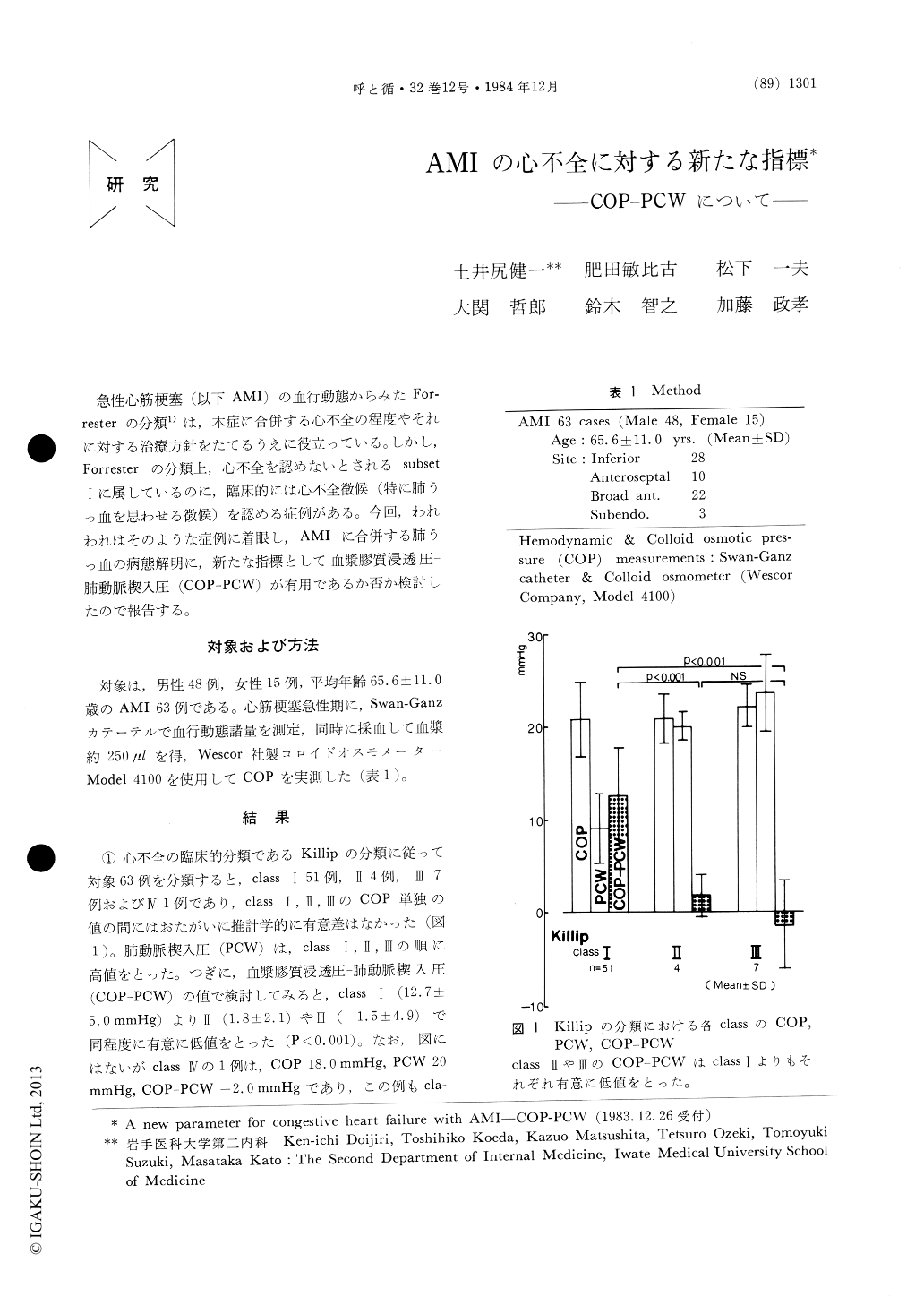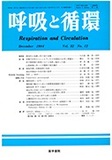Japanese
English
- 有料閲覧
- Abstract 文献概要
- 1ページ目 Look Inside
急性心筋梗塞(以下AMI)の血行動態からみたFor—resterの分類1)は,本症に合併する心不全の程度やそれに対する治療方針をたてるうえに役立っている。しかし,Forresterの分類上,心不全を認めないとされるsubsetIに属しているのに,臨床的には心不全徴候(特に肺うっ血を思わせる徴候)を認める症例がある。今回,われわれはそのような症例に着眼し,AMIに合併する肺うっ血の病態解明に,新たな指標として血漿膠質浸透圧—肺動脈楔入圧(COP-PCW)が有用であるか否か検討したので報告する。
This study is an attempt to estimate the clinical evaluation of plasma colloid osmotic pressure (COP) in patients with acute myocardial infarction (AMI). COP was measured in 63 patients with AMI by colloid osmometer Model 4100 of Wescor Company.
1) Plasma colloid osmotic pressure-pulmonary capillary wedge pressure (COP-PCW) gradient of patients belonging to class II or III of Killip's classification was lower than that of class I. 2)COP-PCW gradient of patients belonging to subset II or IV of Forrester's classification was lower than that of subset III, and subset III was lower than that of subset I. 3) COP-PCW gradient of unclassi-fied cases (These patients had pulmonary congestion nevertheless classified subset I.) was 7.0 mmHg or less and these cases were observed 10% in subset I cases, and the mortality had a high rate than other subset I cases. 4) Change of COP-PCW gra-dient was observed more often remarkably than other hemodynamic parameters. 5) COP or COP-PCW gradient in fetal cases was lower than in non-fetal cases.
These results demonstrate that this COP or COP-PCW gradient measurement was practically availa-ble for detecting pulmonary congestion in patients with AMI.

Copyright © 1984, Igaku-Shoin Ltd. All rights reserved.


